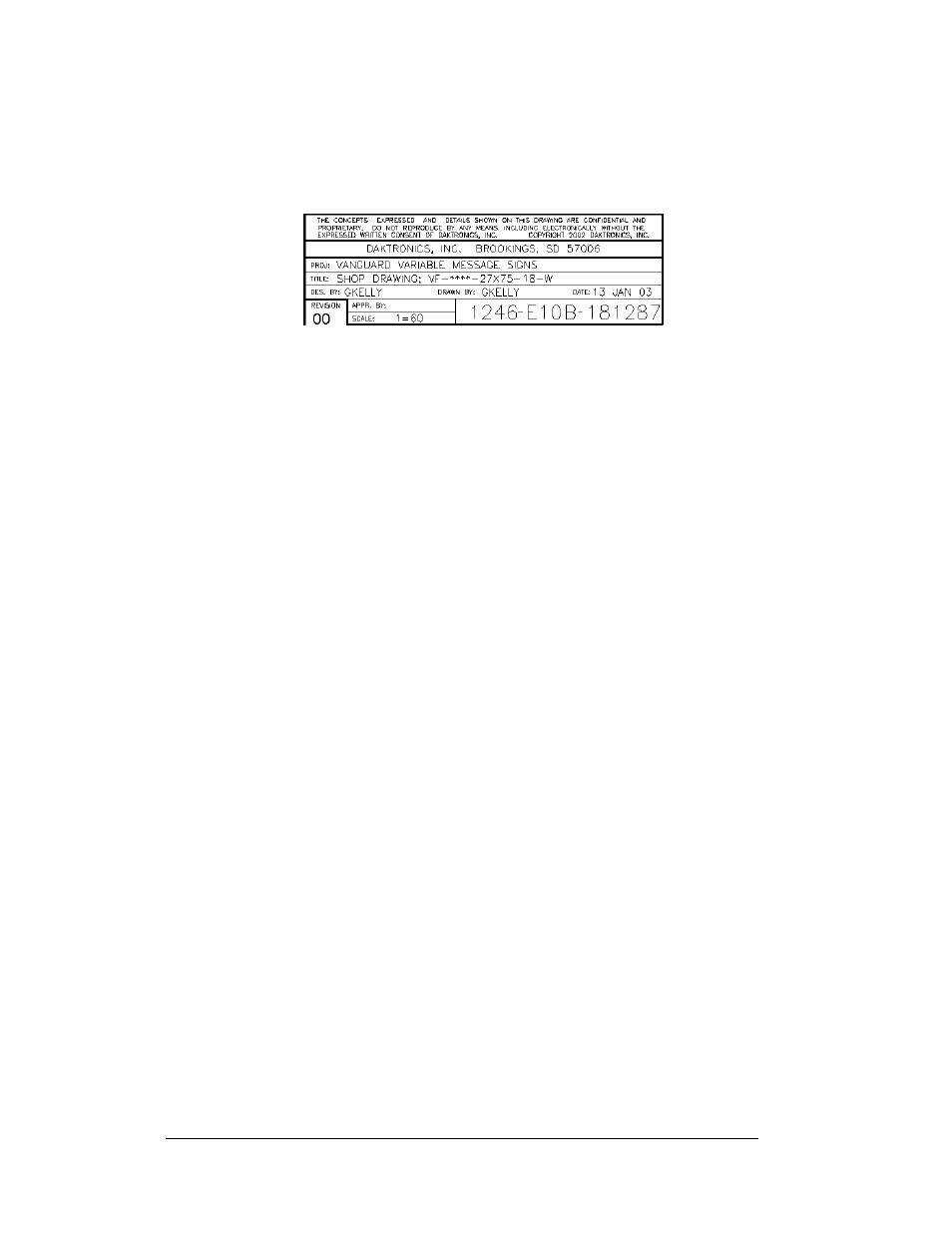Network concepts, Network concepts -2, Figure 1: drawing label -2 – Daktronics AF-3080-68-R,A User Manual
Page 10: 2 network concepts

Figure 1 below illustrates Daktronics drawing label. The lower-right corner of the
drawing contains the drawing number. The manual identifies the drawings by listing
the last set of digits and the letter preceding them. In the example below, the manual
refers to the drawing as Drawing B-181287. Appendix A contains all of the
reference drawings.
Figure 1: Drawing Label
This manual shows all references to drawing numbers, appendices, figures, or other
manuals in bold typeface, as shown below.
“Refer to Drawing B-181287 in Appendix A for the power supply location.”
Additionally, the manual lists drawings referenced in a particular section at the
beginning of that section as seen in the following example:
Reference Drawing:
Shop Drawing; VF-****-27x75-18-W ............................ Drawing B-181287
Daktronics builds displays for long life and that require little maintenance. However,
from time to time, certain sign components need replacing. The Replacement Parts
List in Section 4.14 provides the names and numbers of components that you may
need to order during the life of the sign. Most sign components have a white label
that lists the part number. The component part number is in the following format:
0P-_ _ _ _-_ _ _ _ (component) 0A-_ _ _ _-_ _ _ _ (multi-component assembly).
Following the Replacement Parts List is the Daktronics Exchange and Repair
and Return Programs in Section 4.15. Refer to these instructions if any sign
component needs replacement or repair.
1.2 Network
Concepts
The concept of using LED displays as a cost effective, high impact method of
communication is rapidly growing throughout many industries and businesses. The
reasons for this growth are many, but the need for additional features and the
complexity of multiple display installations has emerged. Daktronics display systems
have been designed to meet those needs.
The common thread to most client requests is a means of programming and
controlling a group of displays from a central control point. Daktronics responded by
developing a powerful system of interconnecting and controlling displays. Great care
has been taken to design products that will satisfy a wide variety of installations.
Some of the design goals of these systems include the following:
•
Easy transfer of messages
•
The ability to tell a display or group of displays in the network which
message should run
•
The ability to determine the status of any display on the network
•
The ability to control multiple display technologies on the same network
Introduction
1-2
